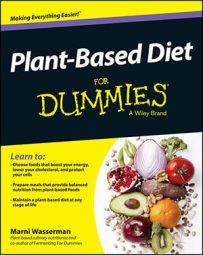Lots of people these days are talking about what it means to eat organic. Incidentally, this also brings to light the label GMO (genetically modified organism), which is becoming a hot topic of discussion because of the prevalence of GMO foods and the health dangers they present.
Without screening your foods for and understanding these labels, you’re doing your body and your health a disservice — especially if you’re a new plant-based eater making all kinds of transitions to better your overall well-being. This is just one more step in the right direction of good health.
Is organic all it’s cracked up to be?
Eating organic is all about making a choice to eat foods that aren’t treated with pesticides, herbicides, fungicides, and the like. It also likely supports agricultural practices that preserve and work toward bettering the condition of the soil. Organic soil has more nutrients, including minerals. This makes for foods that all around taste better and are better for you. The standards for organic food come in several categories:
100 percent organic: Contains only organic ingredients and must be produced without synthetic fertilizers, pesticides, antibiotics, genetic engineering, irradiation, or growth hormones. A U.S. Department of Agriculture (USDA) or Canadian seal of certification may appear on the product.
Organic: Made with at least 95 percent organic ingredients. The remaining 5 percent must be approved by the USDA. No ionizing radiation is allowed. A USDA or Canadian seal may appear on the product.
Made with organic ingredients: Made with at least 70 percent organic ingredients. The remaining 30 percent may be agricultural products that aren’t produced according to organic standards. It must be clear which ingredients are organic. These products can’t display the USDA or Canadian organic seal.
Many small organic farms can’t afford the process of official certification, even though they adhere to all the organic practices the regulations require. You may encounter farms like this at your local farmers’ market, so feel free to ask the farmers directly about whether they follow sustainable farming practices.
It’s not always possible to stick to organic eating 100 percent, but as with anything else, just do the best you can.
What’s all this talk about GMOs?
A GMO is a genetically modified organism — sounds appetizing, right? You should know that most foods (that aren’t labeled otherwise) contain genetically modified organisms. Sounds crazy, right? But GMOs can be found among crops such as soy, corn, and canola, and some fruits and vegetables you likely encounter daily.
As a plant-a-tarian, you’d better watch out, as these ingredients are the basis of most commercial and packaged foods. A simple solution, of course, is to just stop eating these foods and instead eat whole foods that are organic. Sometimes it may not be that simple, but you’ve got to do the best you can. Luckily, governments across the globe are developing standards to help you identify which products contain GMOs.
Numerous scientific claims have created substantial debate about whether GMOs are beneficial to us. The initial theory was that GMOs could help prevent world hunger, give the world new varieties of foods, improve rural livelihoods, and help facilities and the environment. Instead, they have done more harm than good.
GMOs have proven to be unsustainable, as farmers have to purchase new seeds every year while destroying the land (because GMO crops can encourage herbicide-resistant weeds and insecticide-resistant pests that infest non-GMO crops). GMOs have also created numerous allergies, especially to soy, and health problems, all while contaminating large sources of our food supply.
The original goals of GMOs aren’t being accomplished. In fact, Europe has already figured this out, and many European countries ban most GMO crops. Unfortunately, North America hasn’t picked up on this trend. Large companies that produce GMO seeds will do anything they can to protect their seeds and make sure that their seeds are the only ones used by a majority of North American farmers.
You have a choice each time you buy food. Seek out resources like the Non-GMO Project, which helps consumers find products that are free of GMOs. It’s important to know what you can do as a consumer and what you can do for your health. Check out Non-GMO Project for more information.

